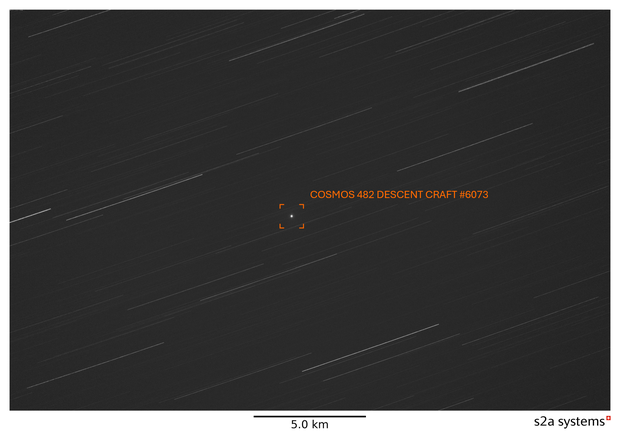
Image Source:
Source: cbsnews.com
Image content: The image depicts a photographic representation of celestial bodies, with the main subject being a specific object labeled "COSMOS 482 DESCENT CRAFT #6073." The content is presented against a dark background, featuring numerous white streaks that represent the movement of various objects across the field of view. A scale bar at the bottom indicates a distance of 5.0 km.
Summary
The Soviet-era spacecraft Kosmos 482, launched in 1972 to explore Venus but stuck in Earth's orbit, likely re-entered the Earth's atmosphere after 53 years, with its titanium-encased lander potentially surviving the descent and crashing to the ground.
Key Points
- Kosmos 482 re-entered Earth's atmosphere on Saturday, with the European Space Agency and EU Space Surveillance confirming the uncontrolled reentry.
- The spacecraft broke into four pieces, with the titanium-encased lander, estimated to be around 3 feet in diameter and weighing over 1,000 pounds, potentially surviving the reentry.
- The exact location of the crash and the amount of debris that survived the descent are unknown, with predicted re-entry locations ranging from the Atlantic to Germany and Australia.